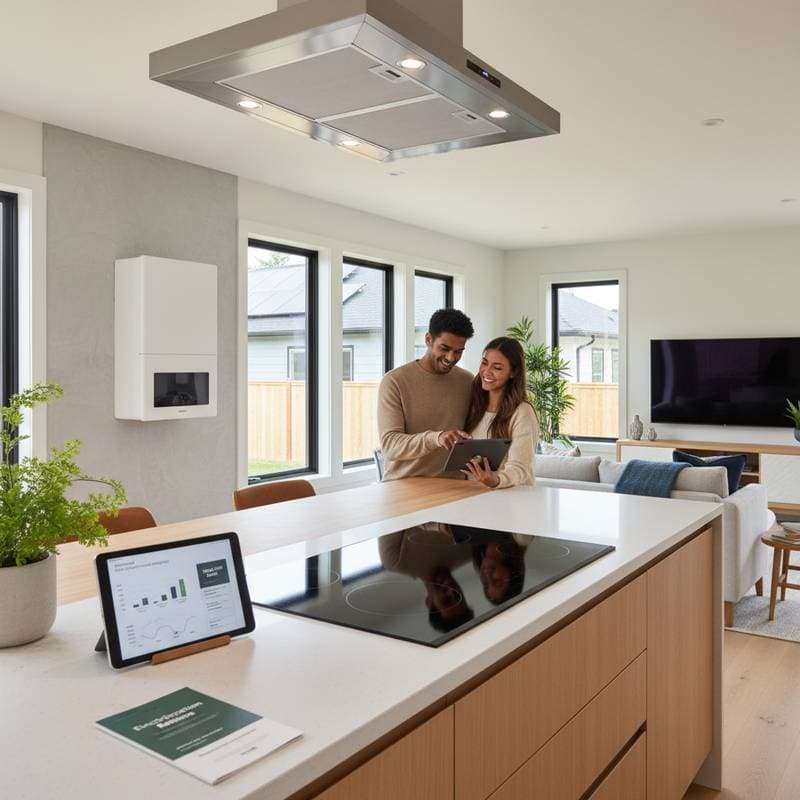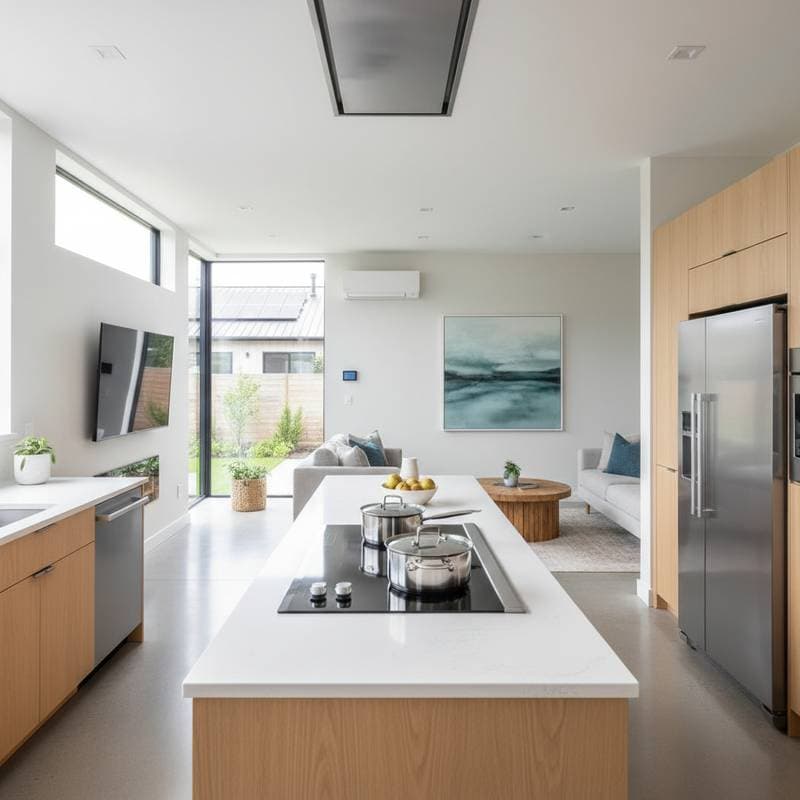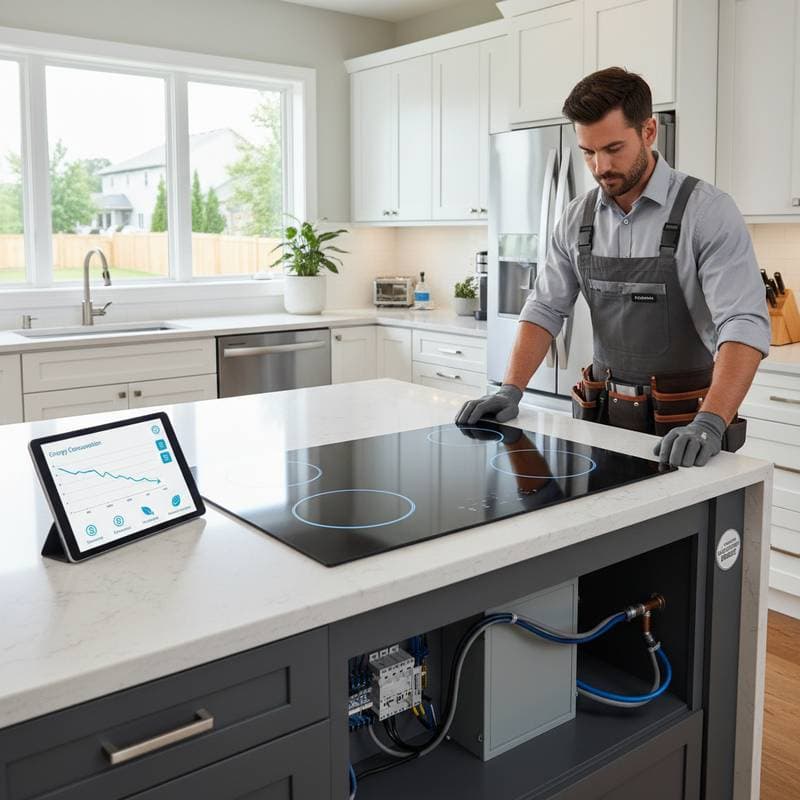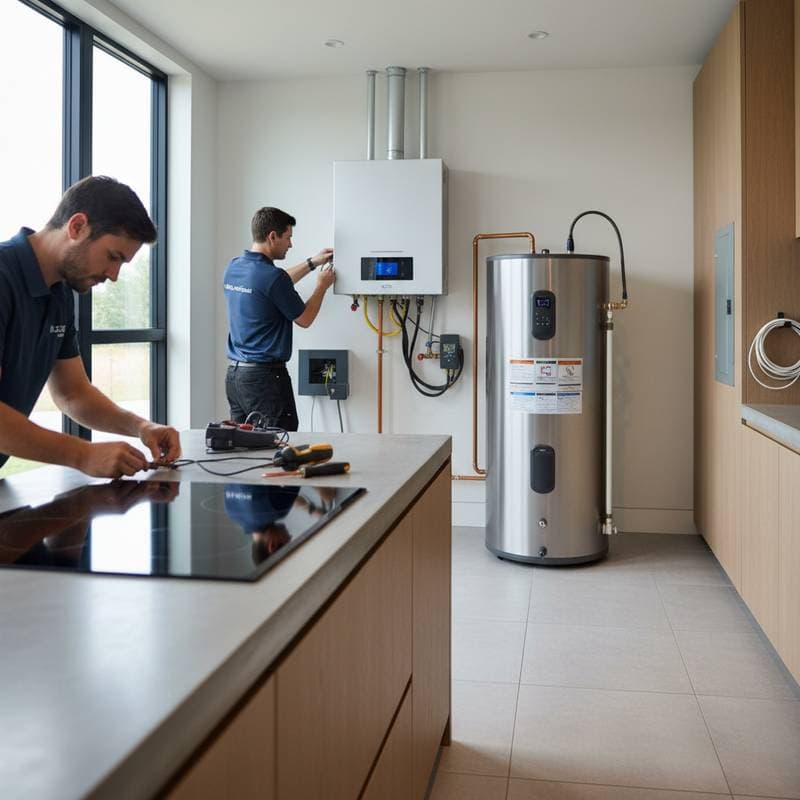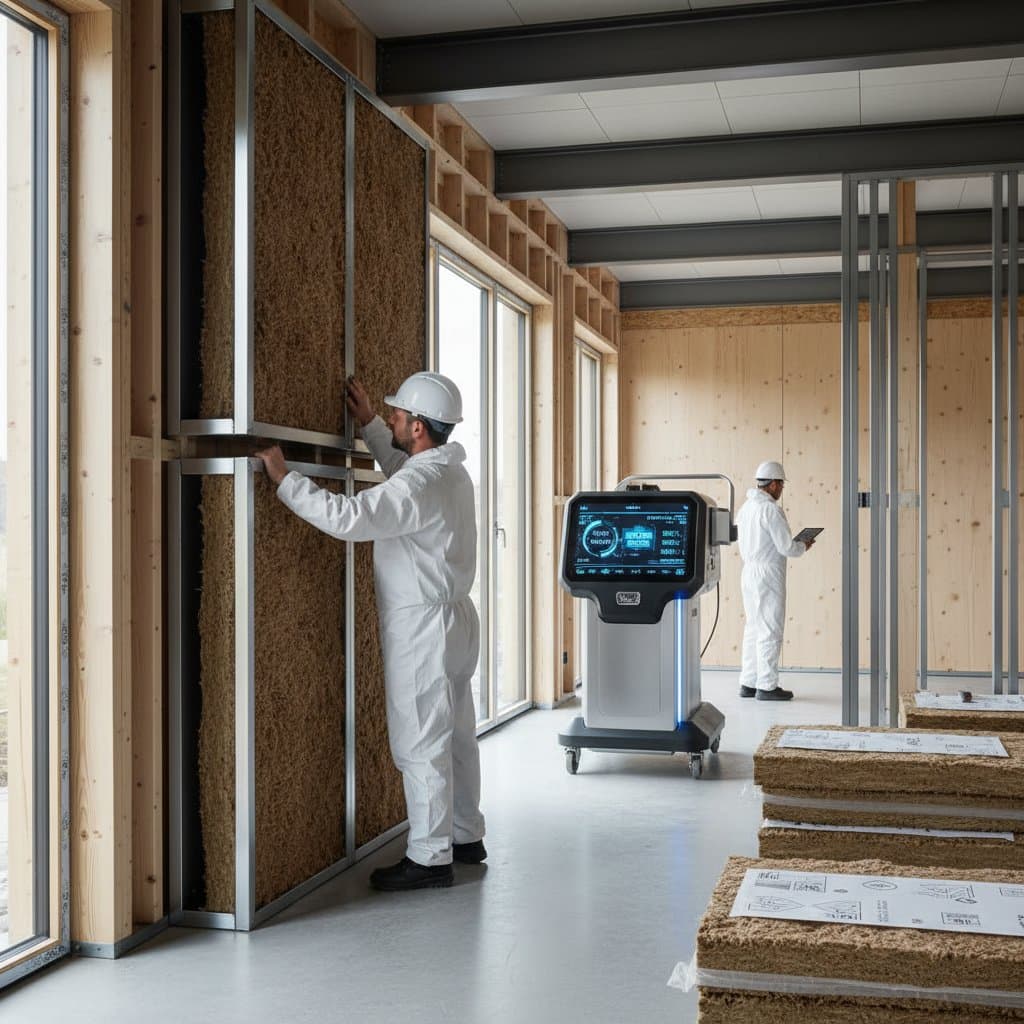Key Points
- Transitioning to an all-electric home eliminates reliance on fossil fuels and lowers long-term energy costs.
- Rebates and incentives offset 30 to 50 percent of conversion expenses when leveraged correctly.
- Priority upgrades feature heat pumps, induction cooktops, electric water heaters, and solar integration.
- Early planning and professional assessments ensure compliance with upcoming gas restrictions and local codes.
Envisioning a Gas-Free Home
As a green building professional, I have assisted numerous homeowners in shifting from gas dependency. The reliable flame of a gas stove or the quick recovery of a gas water heater may hold appeal, yet rising regulations and energy prices render gas less viable. Picture a residence with purer air, the subtle operation of a heat pump delivering efficient warmth, and appliances powered by renewable electricity. This represents the contemporary ease of an electrified dwelling.
If escalating utility bills or local gas bans concern you, know that many households prepare for full electrification, driven by environmental aims and financial benefits. The process appears daunting, yet expert advice renders upgrades seamless, deliberate, and beneficial.
The Urgency of Gas-Free Living
In various areas, gas appliances substantially elevate household emissions. A standard gas stove emits nitrogen dioxide, often exceeding outdoor pollution thresholds indoors. Gas furnaces and water heaters release methane, a strong greenhouse gas. Volatile fuel prices further complicate financial planning.
Adopting electric systems fueled by renewables halves a home's carbon footprint. This change fosters integration of solar panels, battery storage, and intelligent energy controls. Beyond regulatory adherence, electrification builds durability and sustained comfort.
Sustainable design researcher Dr. Lena Ortiz notes, “Electrification represents more than a policy shift. It marks a logical advancement in residential comfort and performance. Executed properly, it fosters healthier spaces and resilient communities.”
Transformations from Electrification
1. Improved Indoor Air Quality
Gas cooking produces carbon monoxide, nitrogen dioxide, and particulates. Induction cooktops replace gas stoves, removing combustion byproducts and enhancing air purity immediately. Residents experience cleaner air and reduced cooking smells, particularly in compact kitchens with modest ventilation.
2. Superior Energy Efficiency
Heat pumps for heating and cooling achieve 200 to 300 percent efficiency, surpassing gas furnaces. They draw heat from ambient air rather than burning fuel, yielding reduced costs and steady temperatures year-round.
3. Reduced Maintenance Expenses
Electric setups involve fewer components, demanding less upkeep. A contemporary heat pump endures 15 to 20 years with basic maintenance. Electric water heaters evade the rust and venting problems of gas units, minimizing future repairs.
4. Safeguarding Future Value
Expanding gas limits preserve elevated property values for electrified homes. Prospective buyers favor efficient, low-emission properties equipped for renewables. Upgrading proactively secures compliance and sidesteps expensive, rushed modifications.
Developing an Electrification Plan
Strategic ordering proves essential for gas-free transitions. Experience shows that evaluating the full home infrastructure, beyond mere appliance swaps, yields optimal results.
Step 1: Perform a Home Energy Audit
Evaluate energy use through a professional audit, identifying issues in insulation, sealing, and electrical capacity. This assessment, priced at $200 to $500, uncovers 15 to 30 percent savings opportunities.
Step 2: Enhance the Electrical Panel
Legacy panels may insufficiently support electric loads. Upgrading to a 200-amp panel costs $1,500 to $3,000 and guarantees secure performance for all-electric operations.
Step 3: Install a Heat Pump for Heating
Heat pumps supply heating and cooling via a single system. Ducted versions suit entire homes, while mini-splits fit targeted areas. Installation ranges from $5,000 to $12,000 based on scale and configuration.
Step 4: Add an Electric Water Heater
Heat pump water heaters leverage surrounding air for heating, slashing energy by up to 60 percent. Installed costs fall between $2,000 and $4,000, with rebates offsetting portions.
Step 5: Adopt Induction Cooking
Induction heats pots via magnetic fields, offering quick response, exact control, and no flames. Prices span $1,200 to $3,000, with utility rebates easing the switch as an accessible starting point.
Step 6: Incorporate Solar and Storage
Solar panels paired with batteries optimize savings and autonomy. A moderate photovoltaic array costs $12,000 to $20,000 post-incentives; batteries add $6,000 to $10,000. Returns occur in 8 to 12 years via bill reductions and credits.
Step 7: Securely Remove Gas Infrastructure
After replacements, a certified contractor caps gas lines to avert leaks and meet utility standards.
Strategies for Greater Efficiency
- Prioritize Sealing and Insulation: Strengthen the building envelope to lessen demands on electric systems and accelerate returns.
- Implement Smart Thermostats: Programmable devices optimize comfort and cut energy by 10 to 15 percent.
- Switch to LED Lighting: These fixtures use 75 percent less power, amplifying electrification gains.
- Incorporate Water-Saving Features: Low-flow items with electric heaters curb energy and resource use.
- Select Experienced Contractors: Professionals in retrofits prevent electrical or airflow complications.
Accessing Rebates and Funding
Programs from governments and utilities support all-electric shifts with rebates for diverse upgrades.
Common Incentives:
- $1,000 to $2,500 for heat pumps
- $500 to $1,200 for water heaters
- $100 to $500 for induction cooktops
- $2,000 to $6,000 for solar and batteries
- Favorable loans for extensive work
Performance rebates scale with savings. Consult local resources or certified experts for up-to-date options.
Project Costs and Schedules
Complete electrification spans $15,000 to $40,000, varying by home size and selections. Rebates and efficiencies recoup nearly half over time, with utility bills dropping 25 to 50 percent monthly.
Schedules differ: Appliance swaps require one to three days; full projects extend weeks for electrical or solar work. Phased approaches distribute expenses and align with contractors.
Navigating Regulations
Codes specify ventilation, electrical loads, and efficiency. Verify permits and inspections beforehand. Streamlined processes for electrification shorten delays.
Green certifications like LEED demand rigorous performance. These boost resale and unlock extra rebates. Engage experts early to align with standards.
Addressing Obstacles
Older homes or outdated wiring pose challenges, yet retrofits succeed via panel upgrades and load management, avoiding complete rewiring.
In harsh winters, specialized heat pumps sustain output below freezing. For cost concerns, on-bill financing or service contracts distribute payments.
Advancing Your Transition
Electrifying a home advances environmental alignment, comfort, and security. Homeowners who strategize, claim incentives, and partner with skilled teams realize superior results.
Begin modestly, such as with cooking or water heating, progressing to comprehensive systems. Each phase diminishes fossil fuel use and nears clean energy reliance.
Contact a certified expert for a complimentary evaluation and tailored strategy. This guidance identifies efficient routes to your objectives.
Embracing electrification equips your home for a sustainable era, harmonizing with planetary needs.
Frequently Asked Questions
Q: How long does converting an average home to all-electric take?
A: Full conversions require four to eight weeks, based on scope and availability. Appliance changes finish in days.
Q: Do electric bills rise after eliminating gas?
A: Electricity consumption grows, but total costs decline due to efficiency. Many report 25 to 50 percent reductions in utilities.
